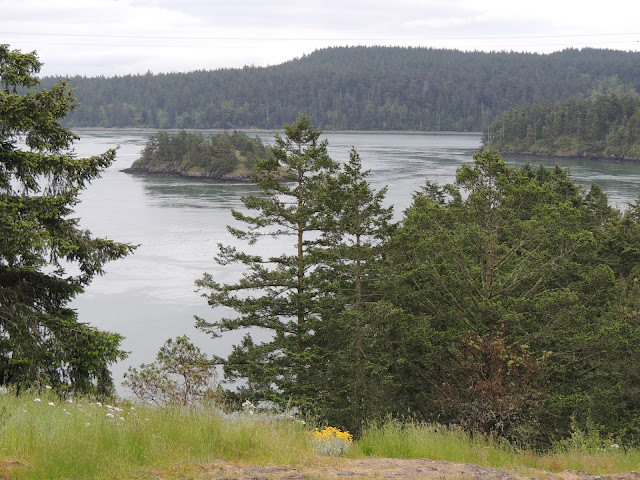One of the key reasons for this trip was to spend a bit more time with this little fellow who has captured our hearts and those of all around him.
 |
| 3 Generations of Greenfield Men |
Once we completed our family visits and our time exploring the northwest corner of Washington State, we headed across the border once more into Canada, in order to take the
Trans-Canada Highway across the lower provinces in order to experience what our map had marked as "scenic" all the way across the country. Because internet access has been sporadic on this portion of our trip, blogging has become a catch-up game. By the time I can report on an area, we are long since gone from there.
The Canadian Rockies, British Columbia, Canada
Coming, as we do, from Michigan, mountains are a breathtaking sight to us, so we planned our trip home so we could spend two nights camping in Golden, BC and spend one "true vacation" day driving to
Lake Louise and the
Icefield Parkway in the rockies. We have had remarkable weather on this trip 99% of the time, and this drive was no exception; the day driving to Golden was a bit damp and cloudy, allowing us to see the surrounding mountains shrouded in fog, relatively clear, low-lying valleys with rivers tumbling and foaming down steep rocky slopes, and bighorn sheep lying peacefully near the roadway, seemingly watching traffic rather than bounding in the rocky terrain above as we would have expected.

Note: This is Canada's 150th anniversary, and they are celebrating by providing FREE passage to all national parks in Canada to EVERY VISITOR, not just Canadians. We were blown away by this display of generosity and welcome from Canada to it's foreign visitors.
At the suggestion of a park guide, we began our day at Lake Louise,
Banff National Park, which was already packed with tourists fairly early in the morning, but the park service had people in place to guide visitors to the rapidly diminishing empty parking spots. Once parked, we joined the throng heading toward the remarkable turquoise waters of the lake reflecting the mountains around it, and the
Fairmont Chateau Lake Louise Resort Hotel. The scenery is incredible, and if you manage to pass, uninjured, the gauntlet of selfie-sticks being waved around indiscriminately, to wander just part of the path that surrounds the lake, you have the opportunity to see the lake and it's magnificent surroundings in all their glory.
 |
| Yes, those ARE kayakers out there in the (literally) icy water! |
We left Lake Louise to spend the day driving part of the Icefield Parkway, making multiple stops to enjoy the spectacular scenery. The day was clear and sunny, so unlike the previous day's drive, we could see each mountain peak clearly, and often see it nearly as clearly reflected in the surrounding waters.
One of our favorite stops was at Bow Lake, which had similar turquoise water to Lake Louise, a much more rustic resort, and far fewer people. The reflections of the mountains here were broken up by the surprisingly large amount of ice and ice floes still on the lake, similar to what we experienced at Lake Louise, though the weather was sunny and summery, and vegetation along the lakeshore was already green and past spring bloom time.






The road is well maintained and wide, but has indisputably steep grades throughout, so we were surprised to see that there was what appeared to be a citizen bike race being held along the entire length of the Parkway that day. When we asked about it at an information booth, we were told it was a relay race that is held annually and involves all levels of riders. Altogether we have been quite surprised at the number of cyclists we have seen throughout our trip across Canada so far. Many great bike paths along the Trans-Canada Highway, and many people of all ages using them, some obviously on day trips, others with bikes heavily loaded with gear, indicating they are riding for days or longer. These are hardy folks!
















































